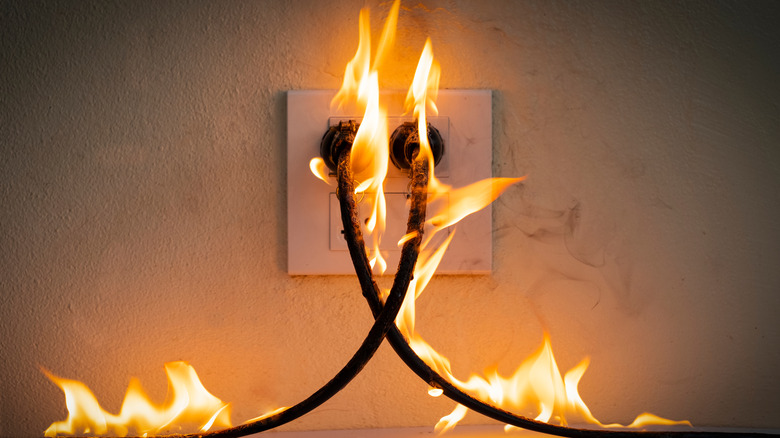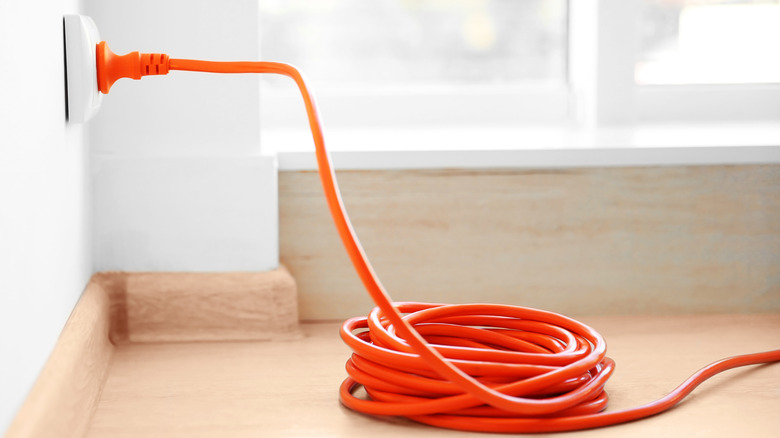How To Pick The Right Extension Cord (And Why It Matters More Than You Think)
Despite so many electronics these days being designed around wireless use (even if they inevitably require charging via some sort of wired connection), there are still plenty of devices that will need to remain anchored to a power source. This is fine, all things considered, except that sometimes those power cords are a bit too short for the space they're being used in.
This is where you might be tempted to use an extension cord. They're a simple way to stretch the reach of a given power cable just that little bit farther (or a lot farther, depending) so you can plug everything in without rearranging an entire room or entertainment center. But there's a bit of a catch: You don't want to grab just any extension cord you find.
Much like electronics, extension cords are designed across a plethora of criteria when it comes to energy consumption (or, in this case, transfer). Much like how not all USB cables are created equal, not all extension cords are built to handle the same amount of amperage, volts, or environmental conditions. It's extremely important to avoid using a cord that can't handle the load of whatever it is you're connecting it to; otherwise, you risk electrical shocks, damage to plugged-in devices, or even fires.
What to look for
Here are a few indicators to check for on a cord's label, to make sure it can do what you need safely.
- J means it's insulated for up to 300 volts (about average for North American households). If you don't see a J, the cord should be unsulated for up to 600 volts.
- P stands for parallel wire construction, which can handle larger indoor devices like air conditioners.
- S is made for general indoor use, which should work well with smaller devices. However, if you only see the S and no other letters, avoid using the cord for larger loads or in spaces that could cause wear and tear on the cord itself.
- W is meant for outdoor use, with insulation specifically made to withstand the elements. It'll work indoors as well, though.
- Amperage ratings tell you how much current the cord can handle, but in general a lower gauge of cord can handle higher amperage loads. Check the amperage of the device (or total amperage for multiple devices) you're connecting to make sure you're not exceeding its limits.
You should also make sure the cord you're buying uses three prongs (not two), which is essential for reducing the chances of shocks and shorts. If your home outlets only accomodate two prongs, you might want to update your electrical wiring for safety's sake.

